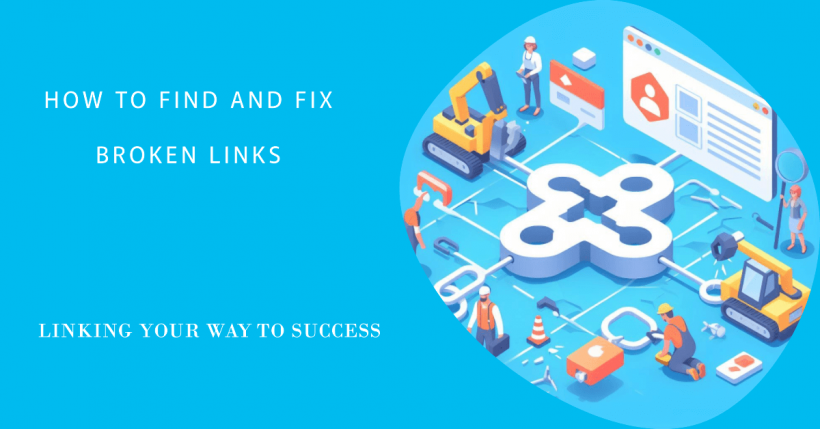
Fixing broken links on your website can be tricky. One minute, a link works fine, driving users and search bots to your content. The next minute—it’s broken, resulting in dead ends and errors across your site.
I’ll share proven techniques to hunt down broken links and fix them to restore a smooth user experience. Read on to learn:
- Common causes of broken links and their negative impacts
- Tools and methods to find broken internal and external links
- Fixes for restoring broken internal links
- Approaches for handling broken external links and backlinks
- Tips for ongoing monitoring and maintenance
With the proper diligence and maintenance strategy, you can banish pesky broken links. Let’s get started!
Key Takeaways:
Broken links can happen on any site. Finding and fixing them helps you:
- Improve user experience by eliminating frustrating dead ends
- Maintain rankings by preserving equity in working links
- Uphold credibility through a well-maintained site
- Uncover opportunities for outreach with broken link-building
This guide will equip you with a plan to:
- Identify broken links using site audits and link analysis
- Choose the proper repair tactic for internal vs external links
- Put in place 301 redirects to pass equity from moved pages
- Leverage tools to watch link health
- Turn broken links into SEO wins
Keeping links intact is crucial for site success. With consistent audits and maintenance, you can stay on top of breaks before they become bigger headaches.
What Are Broken Links and Why Do They Matter?
Before diving into fixes, we need to understand what exactly qualifies as a broken link and why it requires attention.
What Causes Links to Break?
Links can stop working for a variety of reasons:
- Pages removed or renamed – If a page gets deleted or changed to a new URL, links pointing to the old address will break.
- Expired domains – If a site you linked to goes offline, those external links will die.
- Typos – Simple writing mistakes in anchor text links or URLs will break them.
- Technical issues – Underlying problems like server outages, redirect failures, or CMS glitches.
As sites evolve, links can become corrupted or directed to non-existent destinations.
Types of Broken Links
There are a few common types of broken link errors:
- 404 errors. The most obvious, these dead links return the classic “page not found” messages.
- Redirects to the wrong page. Misconfigured redirects send users to irrelevant content instead of the correct destination.
- Endless redirect loops. Chasing redirects in circles will frustrate users.
The Dangers of Broken Links
While they may seem harmless, leaving broken links unaddressed can hurt your site in many ways:
- Frustrated users – Dead ends undermine the experience and may cause visitors to leave.
- Lost link equity – Any SEO value being passed expires when links break.
- Lower search rankings – Too many dead links signal technical problems, impacting optimization.
- Damaged credibility – Users will question if your site seems outdated, neglected, or spammy.
Broken links introduce UX and SEO issues, so fixing them is mission-critical.
Preventing Broken Links
While not foolproof, you can cut future broken links by:
- Using URL shorteners and redirects for stable links
- Updating internal links when moving content
- Checking high-value external sites
Staying proactive lessens breaks, but you’ll still need to watch.
Now that we’ve defined broken links and their implications let’s move on to hunting them down.
How to Find Broken Links
To fix broken links, you first need to find where issues exist on your site. Let’s explore proven tactics for identifying broken internal and external links.
Using Google Search Console
Google Search Console provides access to how Google bots crawl and index your site. Check these reports to catch breaks:
- Check the Crawl Errors report. This shows pages with crawling issues, often due to broken links or other technical problems. Review to identify any error codes related to broken links.
- Identify 404 errors. Google will flag pages it finds that return 404 errors. These dead links need to be fixed.
Checking Search Console shines a light on link issues Google detects.
Using SEMrush
SEMrush allows in-depth analysis of your site’s backlinks and outbound links. Use it to reveal breaks:
- Scan backlinks and outbound links. Link audits uncover broken backlinks pointing to your site and any broken outbound links to external sites.
- Get alerts for broken links. Enable notifications so it monitors and alerts you of any new breaks found.
Encourage User Feedback
Your visitors are great resources for identifying broken pages:
- Make it easy to report broken pages. Include visible feedback forms or options throughout your site to report problems.
- Monitor social media complaints. Keep an eye out for any user complaints of broken pages mentioned online.
Listening to your users helps surface links in need of repair.
With data from many sources, you can pinpoint both internal and external broken links.
Fixing Broken Links

Once you’ve identified broken links, it’s time to start repairing them. Let’s go through remedies for internal links, external links, and backlinks.
Fixing Broken Internal Links
For links within your site pointing to missing or changed content, you have a few options:
- Redirect using 301s. For moved or renamed pages, set up 301 redirects to send the old URLs to the new location. This preserves link equity.
- Delete obsolete links. Remove dead links rather than leave broken ones.
- Correct typos. Check for minor text errors or formatting issues disrupting links.
With the proper fixes, you can get internal links working again.
Handling Broken External Links
Dealing with broken links to third-party sites takes more care:
- Remove outdated links. Delete completely if the external site no longer exists or is irrelevant.
- Replace with alternatives. Swap in working substitute links to related resources if possible.
- Contact site owners. For worthwhile sites with temporary issues, let them know to try getting the link fixed.
- Mark as nofollow. It keeps a link in place but strips SEO value until it recovers.
Check the best approach for each external link.
Managing Broken Backlinks
For broken links from external sites pointing your way:
- Keep valuable backlinks. If from a reputable source, try to get them restored.
- Disavow spammy ones. Sever ties to questionable backlinks using Google’s disavow tool.
- Request removal. Ask sites to delete broken links referencing you.
- Leverage for outreach. Create content to replace outdated/missing resources linked to and pitch a link.
Properly maintaining backlinks protects your site’s integrity.
With the appropriate solutions, you can get all types of broken links back in working order.
Monitoring Links
Now that you’ve fixed your broken links staying vigilant is crucial to prevent new ones from popping up.
Schedule Regular Link Audits
- Set calendar reminders to recheck links. Monthly, quarterly, or annually, depending on your site size and frequency of content updates. More content means more potential link issues.
Use Automated Link Monitoring
- Leverage automated tools. Use tools like Dead Link Checker to scan your pages around the clock. They identify issues as they surface.
- Use custom scripts for large sites with many external links. Python or PHP scripts can track those outbound links for breaks.
Stay on Top of Site Changes
- Update internal links and sitemaps whenever you add, remove or rename content to prevent inadvertent breaks.
- Notify external sites linking to altered or removed content so they can adjust their links.
Proactive checks and upkeep are vital for minimizing broken links long-term. Track to avoid new issues cropping up undetected.
Bonus: Broken Link Building
While broken links are a headache, they also present SEO opportunities:
- Find 404 pages on authoritative sites. Use tools to analyze competitors/industry sites and discover dead ends.
- Create content that fixes the break. Craft posts, guides, tools, etc., that fill the content gap.
- Reach out to site owners with fixed links. Email them your content that solves their broken link issue and offer to provide a link. If they publish it, you’ve earned a high-value backlink!
Turning broken links into valuable backlinks takes effort but pays dividends.
Conclusion
Broken links can happen to any website. But this guide has equipped you with the knowledge to:
- Diagnose broken internal and external links
- Select the right repair tactics based on a link type
- redirect changed URLs and remove obsolete links
- Track link health with site audits and tools
- Transform broken links into SEO wins
Checking your links and maintaining proper upkeep is crucial for an optimized site.
FAQ
- What’s the easiest way to find broken internal links? Use link checker browser extensions.
- How often should I watch links? Monthly or quarterly, more frequently for large sites.
- Can I prevent broken links? Not entirely, but you can minimize them by staying on top of link maintenance.
- What tools best identify and fix broken links? SEMrush, Moz, Screaming Frog, and dedicated broken link checkers.